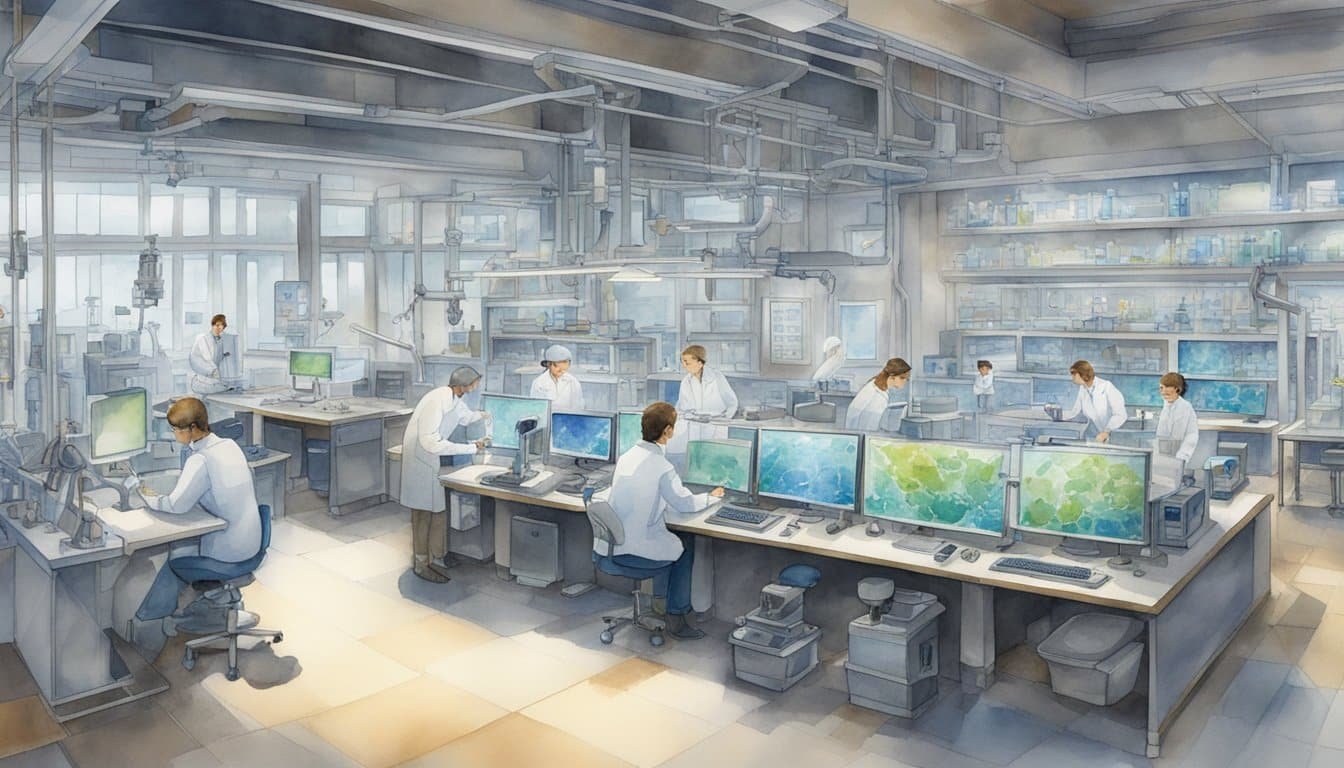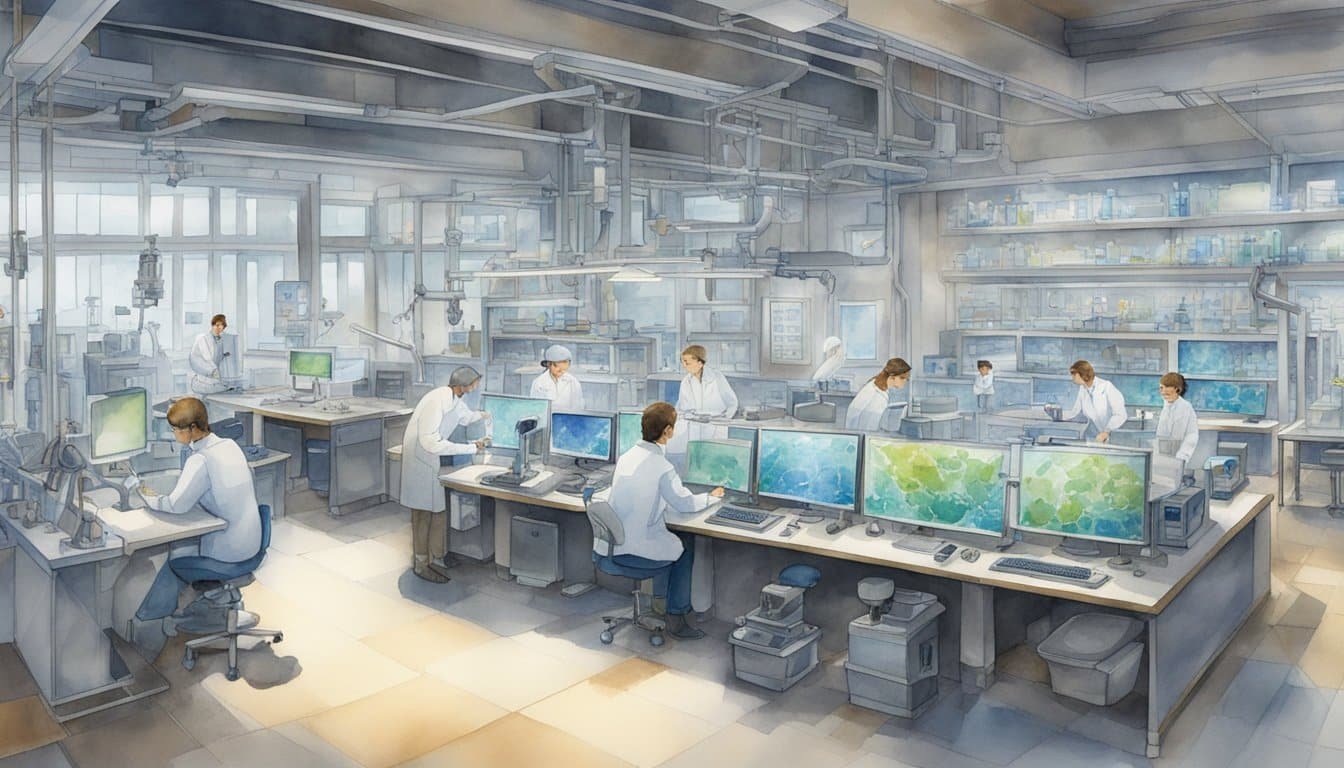Alphafold Overview
Alphafold, developed by DeepMind, symbolizes a revolutionary leap in the field of biology, employing artificial intelligence to predict protein structures with remarkable accuracy, fundamentally changing the landscape of scientific research.
Evolution of Protein Prediction
The quest for understanding protein folding has been a long-standing challenge for biologists.
In the past, predicting the 3D structure of proteins was achieved through laborious experimental methods with results accruing over months or years.
With Alphafold, scientists now have access to a tool capable of predicting protein structures with precision previously thought unattainable.
Developed by DeepMind, Alphafold utilizes deep learning, a subset of machine learning, to discern the intricate patterns in protein folding, leveraging vast datasets and computational power in ways that mimic the neural networks of the human brain.
Impact on Scientific Research
The impact that Alphafold has on scientific research is monumental.
It has swiftly become a vital instrument, with applications proliferating across various domains of life sciences.
By predicting protein structures en masse, Alphafold facilitates new discoveries in drug development, disease understanding, and even enzyme design.
This innovation was so profound that the journal Nature heralded Alphafold’s achievements as a cornerstone for future biological breakthroughs.
By equipping scientists with the ability to rapidly generate accurate models of protein structures, Alphafold is not only advancing scientific exploration but also keenly demonstrating the potent synergy between biology and artificial intelligence.
Technical Deep Dive

Diving into the technical aspects of AlphaFold reveals impressive feats in artificial intelligence’s application to biology.
This journey uncovers how it predicts complex protein structures from simpler amino acid sequences using state-of-the-art machine learning.
AlphaFold’s Prediction Mechanism
AlphaFold’s engine is built upon a revolutionary approach to predicting the 3D structure of proteins from their amino acid sequences.
Its method involves constructing a highly accurate “confidence measure,” which gives insights into the reliability of its predictions.
By representing a protein’s possible shapes as a distribution of probabilities – essentially a map of where certain parts of the protein might be in three-dimensional space – AlphaFold can accurately predict the final, folded structure.
Data Sources and Training
The training of AlphaFold utilizes vast repositories of known protein structures, such as the Protein Data Bank (PDB), which is a critical resource containing thousands of proteins’ 3D structures.
Its deep learning techniques capitalize on previous Critical Assessment of Structure Prediction (CASP) competitions, especially insights gained from CASP14, to refine its algorithms.
During training, AlphaFold analyzes patterns and features from known structures to predict unknown protein sequences’ structures.
Accuracy and Validation
In terms of accuracy, AlphaFold has achieved what is considered “atomic accuracy,” especially notable in its backbone accuracy and the positioning of side chains.
This success was showcased during CASP14, where it outperformed other methods in predicting protein structures.
Validation procedures typically include comparing AlphaFold’s predicted structures with experimentally confirmed models, checking them against parameters like thermodynamic stability and evaluating them for potential overfitting, a scenario where a model might accurately predict training data but fail to generalize to new data.
The use of powerful GPUs has facilitated such intensive computations, iterating through models using techniques like gradient descent to minimize prediction errors.
Applications and Future

AlphaFold2, developed by DeepMind, represents a revolutionary leap in bioinformatics, particularly impacting structural biology and medicine.
This AI-driven tool has provided solutions to the protein folding problem, a pivotal challenge that has puzzled scientists for decades.
From Research to Real-World
In the transition from research to real-world applications, AlphaFold2 impacts various fields of biology and medicine.
Its accurate predictions of protein structures are forging paths for new discoveries in drug discovery.
Scientists are now able to predict how molecules, such as prospective drugs, will interact with proteins in the human body.
This capability is enhancing the design and efficiency of drug development, with potential impacts on the speed at which new medications can reach the market.
Protein design is another area where AlphaFold2 is proving to be a game-changer.
Researchers are using its predictions to design novel proteins with functions tailored to specific needs, which could advance materials science and biotechnology.
In structural biology, understanding the 3D shape of proteins is critical, and tools such as X-ray crystallography, cryo-electron microscopy, and nuclear magnetic resonance have been indispensable.
AlphaFold2 complements these methods, offering an alternative when traditional techniques might be challenging or time-consuming.
Expanding the Proteome Knowledge
The expansion of proteome knowledge is another exciting frontier.
AlphaFold2 is contributing to the characterization of the human proteome, which encompasses all the proteins that can be expressed by a human being.
With initiatives like the human proteome project, EMBL-EBI’s massive database of protein structures has grown significantly with the inclusion of AlphaFold’s predictions.
These vast datasets aid in bioinformatics analysis, enabling researchers to uncover previously unseen patterns and relationships within the proteome.
The tool has even sparked advancements in computational methods for protein structure prediction.
The Critical Assessment of Protein Structure Prediction (CASP) competitions, where scientists test the accuracy of their predictive models against unknown protein structures, have witnessed the power of AlphaFold2.
Assessment metrics like the global distance test (GDT) and global superposition metric have seen scores rise, marking improvements in prediction accuracy.
AlphaFold2 stands as a testament to the principles of scientific research, echoing Anfinsen’s dogma that a protein’s amino acid sequence, under suitable conditions, deterministically leads to its structure.
With continued refinement of AI models, the implications for scientific research and practical applications are boundless, promising to accelerate discovery and innovation exponentially.




